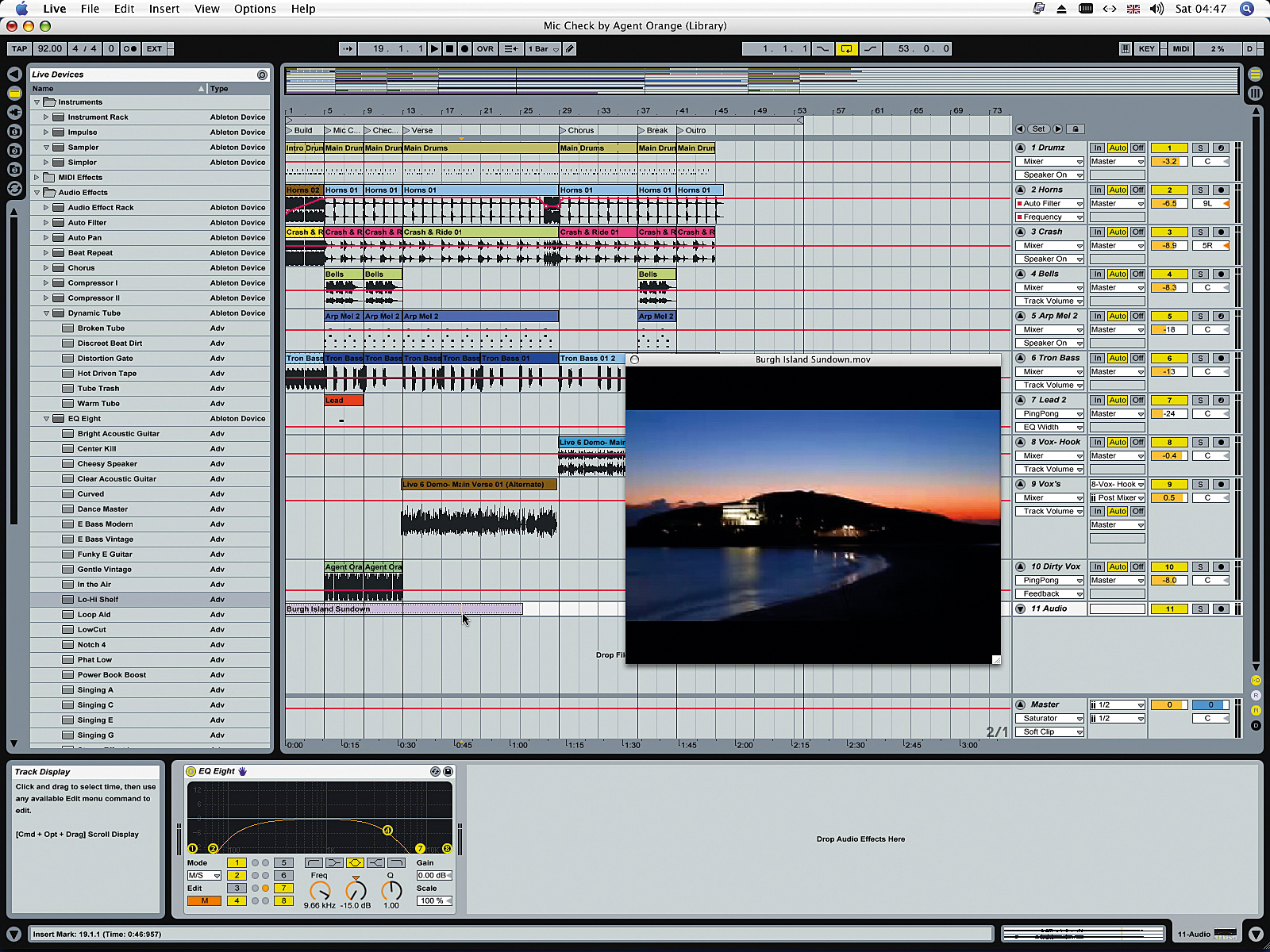TechRadar Verdict
Seasoned users will find that Live retains its instant-groove appeal, while stage performers will appreciate enhancements to project organisation and MIDI control
Pros
- +
Makes Experimentation a Breeze
- +
Movie Support
- +
Racks and Folders Improve Workflow
- +
Flexible MIDI Mapping
- +
Multi-Core/Processor Support
Cons
- -
No Surround Sound Support
Why you can trust TechRadar
Here's an experiment to try. Find a DJ mate who's a vinyl junkie - the sort who can beat-match and scratch as if born with a headphone earpiece clamped to his or her head. Advocate DJing on a computer, then hear the DJ rant about the superior feel of vinyl and decks. Then boot Ableton Live, load some media clips and see how long it takes for the mouse to be wrested from you by your formerly Luddite friend.
Showing off the on-the-fly music-making capabilities of Live is the best way to introduce a newcomer to it. Whereas putting a tune together in such monster music software as Cubase or Logic demands preparation, Live enables you to load disparate audio and MIDI snippets and jam away with ease. It beat- matches and re-pitches very effectively, while sequencing facilities are on-hand for creating more structured pieces.
Since its launch in 2001, Live has been giving DJs and real musicians joy. But version 6 is now here and brings with it a great new ability. It's now possible to drag and drop movie files (MOVs) from the browser into the Arrangement window, trim them to suit and warp music to match the action.
There are extras on the audio side, too. Live 5's 4-band EQ has doubled up to EQ Eight, offering finer control over tone-shaping, and there's the facility to morph from extreme EQ to bypass for those trendy filter-sweep effects. There are new tools for adding warmth to the tone.
Dynamic Tube emulates the characteristics of vacuum-tube amplifiers, while additions to Saturator include a waveshaper for custom saturation curves and a second output stage to keep the signal in check should you go mad with the main stage. Both are too light for metal heads, but do lend a passable 'British crunch' to otherwise clean guitar and add a useful edge to analog synth patches.
Sound-generation-wise, Live's Simpler sampler receives several gigabytes of multi-sampled instruments, the collection comprising chiefly traditional timbres. The package also hosts a new instrument called Sampler, Simpler's big brother. However, like Ableton's soft synth Operator, which has also been updated, it costs extra.
Getting Down
While it would be good to see more free instruments, it's clear that the developer has been more concerned with the way the software deals with the system and the way you work the software. Hence Live 6 can use multi-core processors and multi-processor systems.
There's a real gain to be had here - on a dual-processor 2GHz PowerPC with 2.5GB RAM, Activity Monitor shows the CPU approximately 82% idle when playing back Live 5.2 demo song Arped by MRoc, but it's around 90% idle with Live 6. Add in Deep Freeze, by which you can render CPU-heavy tracks as audio while retaining access to many editing functions, and you've got an altogether more system-friendly package.
Driving Live is also smoother thanks to a 'project folder' system via which collections of sets, presets and their attendant audio and movie clips can be grouped to help organise, archive and distribute your work. Racks have also been introduced so you can group instruments and effects together, control multiple parameters simultaneously, save your own configurations and share them with collaborators.
While the new features might be expected to increase Live's complexity, workflow improvements provide a counterbalance. Sure, mugging up on the manual is required if approaching this program from scratch, but that goes for many creative software offerings. Seasoned users will find that Live retains its instant-groove appeal, while stage performers will appreciate enhancements to project organisation and MIDI control. As for vinyl junkies, it may be time to go digital.
Tech.co.uk was the former name of TechRadar.com. Its staff were at the forefront of the digital publishing revolution, and spearheaded the move to bring consumer technology journalism to its natural home – online. Many of the current TechRadar staff started life a Tech.co.uk staff writer, covering everything from the emerging smartphone market to the evolving market of personal computers. Think of it as the building blocks of the TechRadar you love today.
